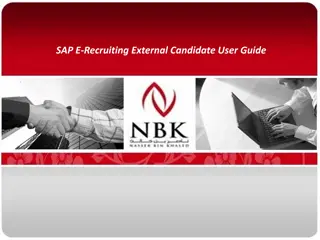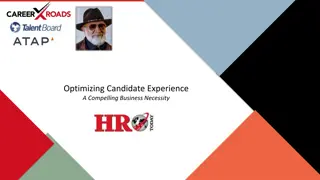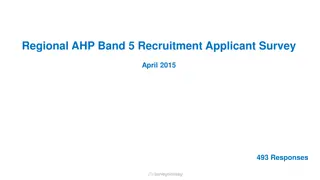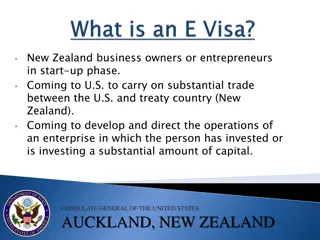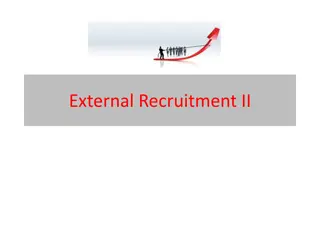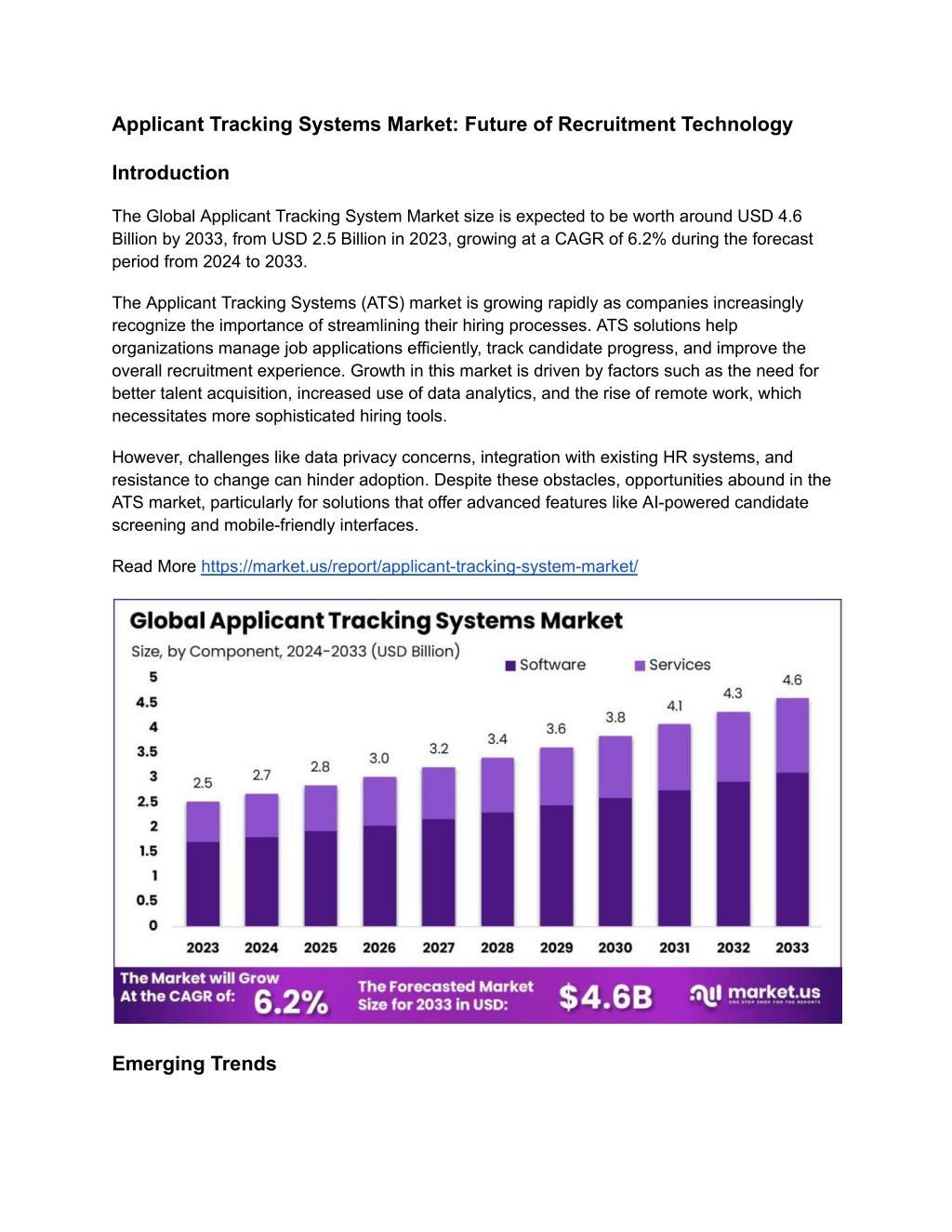
Applicant Tracking Systems Market : Elevating Candidate Experiences
The Global Applicant Tracking System Market size is expected to be worth around USD 4.6 Billion by 2033, from USD 2.5 Billion in 2023, growing at a CAGR of 6.2% during the forecast period from 2024 to 2033.n
Download Presentation

Please find below an Image/Link to download the presentation.
The content on the website is provided AS IS for your information and personal use only. It may not be sold, licensed, or shared on other websites without obtaining consent from the author. Download presentation by click this link. If you encounter any issues during the download, it is possible that the publisher has removed the file from their server.
E N D
Presentation Transcript
Applicant Tracking Systems Market: Future of Recruitment Technology Introduction The Global Applicant Tracking System Market size is expected to be worth around USD 4.6 Billion by 2033, from USD 2.5 Billion in 2023, growing at a CAGR of 6.2% during the forecast period from 2024 to 2033. The Applicant Tracking Systems (ATS) market is growing rapidly as companies increasingly recognize the importance of streamlining their hiring processes. ATS solutions help organizations manage job applications efficiently, track candidate progress, and improve the overall recruitment experience. Growth in this market is driven by factors such as the need for better talent acquisition, increased use of data analytics, and the rise of remote work, which necessitates more sophisticated hiring tools. However, challenges like data privacy concerns, integration with existing HR systems, and resistance to change can hinder adoption. Despite these obstacles, opportunities abound in the ATS market, particularly for solutions that offer advanced features like AI-powered candidate screening and mobile-friendly interfaces. Read More https://market.us/report/applicant-tracking-system-market/ Emerging Trends
1. AI and Machine Learning: These technologies are transforming ATS by automating tasks like resume screening and candidate matching. 2. Mobile Optimization: With the rise of mobile job applications, ATS platforms are increasingly offering mobile-friendly interfaces. 3. Integration with Social Media: ATS platforms are leveraging social media channels for sourcing and engaging with candidates. 4. Enhanced Analytics: Advanced data analytics provide deeper insights into recruitment processes and candidate behavior. 5. Focus on Candidate Experience: Improving the candidate's experience through user-friendly interfaces and timely communication is becoming a key priority. Top Use Cases 1. Resume Screening: Automating the screening process to quickly identify qualified candidates. 2. Interview Scheduling: Coordinating interview times between candidates and interviewers without manual intervention. 3. Onboarding: Streamlining the onboarding process by integrating with HR systems and providing new hires with necessary information. 4. Compliance Management: Ensuring that recruitment practices comply with labor laws and regulations. 5. Talent Pool Management: Building and maintaining a database of potential candidates for future openings. Major Challenges 1. Data Privacy: Ensuring that candidate data is protected and compliant with regulations like GDPR. 2. Integration Issues: Seamlessly integrating ATS with other HR and business systems. 3. User Adoption: Overcoming resistance from HR teams accustomed to traditional hiring methods. 4. Cost: Managing the costs associated with implementing and maintaining ATS solutions. 5. Customization: Meeting the unique needs of different organizations with customizable features. Market Opportunity 1. Small and Medium Enterprises (SMEs): There is significant potential for ATS solutions tailored to the needs and budgets of SMEs. 2. Emerging Markets: Expanding into regions with growing economies and increasing digital adoption. 3. Advanced Features: Developing AI-powered tools and analytics to enhance recruitment efficiency.
4. Partnerships: Forming strategic alliances with other HR tech providers to offer integrated solutions. 5. Candidate-Centric Features: Focusing on features that improve the candidate experience, such as real-time updates and feedback mechanisms. Conclusion The Applicant Tracking Systems market is poised for substantial growth as organizations continue to seek efficient, data-driven recruitment solutions. While challenges such as data privacy and integration persist, the opportunities in this market are vast, particularly with the adoption of AI, mobile optimization, and candidate-centric features. By addressing these challenges and capitalizing on emerging trends, ATS providers can significantly enhance the recruitment process for organizations worldwide.








